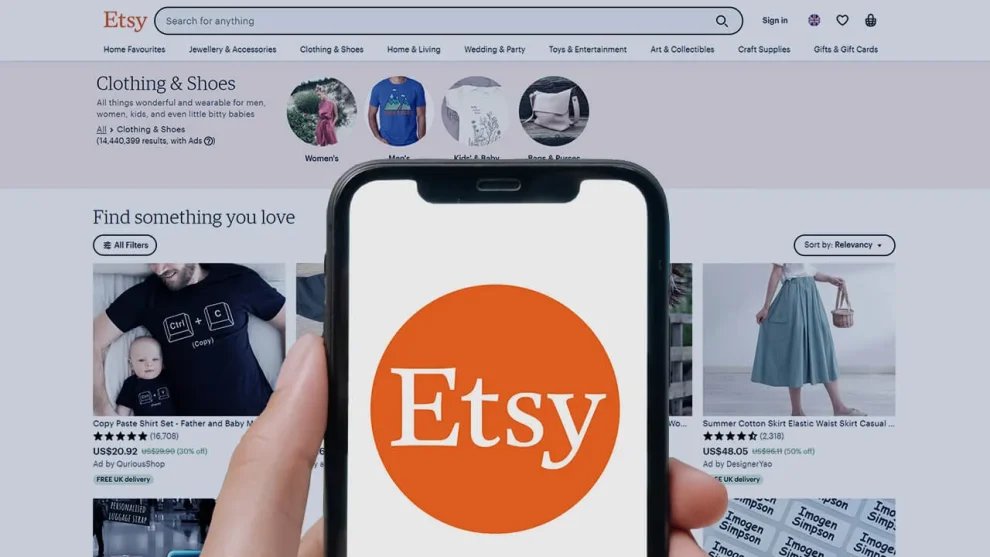Are you a creative individual with a passion for crafting unique, handmade items? Have you ever dreamed of turning your hobby into a profitable business? Look no further than Etsy, the leading online marketplace for artisans and vintage enthusiasts. In this comprehensive guide, we’ll walk you through the process of starting your own Etsy shop, from setting up your account to optimizing your listings for success.
Why Sell on Etsy? The Benefits of Opening an Etsy Shop
Before we dive into the nitty-gritty of setting up your Etsy shop, let’s explore why this platform is an excellent choice for creative entrepreneurs:
- Massive Audience: Etsy boasts a global community of millions of active buyers seeking unique, handcrafted items. By selling on Etsy, you gain instant access to this vast potential customer base.
- User-Friendly Platform: Etsy provides a user-friendly interface that makes it easy to set up and manage your shop, even if you have limited technical skills.
- Built-In Trust: Etsy has established itself as a reputable marketplace, instilling trust in buyers. This inherent trust can help you attract customers and build credibility for your brand.
- Affordable Fees: Compared to other e-commerce platforms, Etsy offers relatively low listing fees and transaction costs, making it an accessible option for small business owners.
Step 1: Determine Your Niche and Target Audience
Before opening your Etsy shop, it’s crucial to identify your niche and target audience. Consider the following questions:
- What unique products can you offer that align with your skills and passion?
- Who is your ideal customer? Consider factors such as age, gender, interests, and purchasing habits.
- How can you differentiate yourself from other sellers in your niche?
By clearly defining your niche and target audience, you can create products that resonate with buyers and develop a strong brand identity.
Step 2: Create Your Etsy Account
To start selling on Etsy, you’ll need to create an account. Follow these simple steps:
- Visit Etsy.com and click on the “Sign In” button in the top right corner.
- Click on “Register” and provide your email address, name, and a secure password.
- Read and agree to Etsy’s terms of use and privacy policy.
- Verify your account by clicking the link sent to your email address.
Congratulations! You now have an Etsy account. Next, let’s set up your shop.
Step 3: Set Up Your Etsy Shop
To create your Etsy shop, follow these steps:
- Click on “Sell on Etsy” at the top right corner of the Etsy homepage.
- Choose your shop language, country, and currency.
- Select your shop name. Choose a memorable, unique name that reflects your brand identity.
- Click “Save and continue” to create your shop.
Now that your shop has been created, it’s time to add some essential information.
Shop Sections and Policies
Organize your shop by creating sections to categorize your products. This makes it easier for buyers to navigate your offerings. To create sections:
- Go to “Shop Manager” and click on “Listings.”
- Click on “Add a section” and enter a name for your section.
- Repeat the process to create additional sections as needed.
Next, establish your shop policies. Clear policies help set expectations and protect your business. Include information about shipping, returns, exchanges, and any other important details. To create your policies:
- Go to “Shop Manager” and click on “Settings.”
- Click on “Policies” and fill in the relevant information.
- Save your changes.
Payment and Billing
To get paid for your sales, you’ll need to set up your payment and billing information. Etsy offers various payment methods, including PayPal, credit cards, and Etsy Payments. To set up your payment preferences:
- Go to “Shop Manager” and click on “Finances.”
- Click on “Payment settings” and choose your preferred payment method.
- Provide the necessary information and save your changes.
Step 4: Create Compelling Product Listings
Your product listings are the heart of your Etsy shop. To create listings that attract buyers and drive sales, follow these tips:
Product Titles
Craft descriptive, keyword-rich titles that accurately represent your products. Include relevant details such as size, color, and materials.
Product Descriptions
Write detailed, engaging descriptions that highlight the unique features and benefits of your products. Use storytelling to connect with buyers and evoke emotions. Optimize your descriptions for search engines by naturally incorporating relevant keywords.
Product Tags
Utilize Etsy’s 13 tags to help buyers discover your products. Use a mix of broad and specific keywords related to your item, including synonyms and long-tail keywords.
Product Photos
High-quality product photos are essential for capturing buyers’ attention and building trust. Use clear, well-lit images that showcase your products from various angles. Consider investing in a simple lightbox or photography setup to enhance your visual appeal.
Pricing Strategy
Determine your pricing strategy based on factors such as materials costs, labor, and market research. Price your items competitively while ensuring you maintain a sustainable profit margin.
Step 5: Optimize Your Shop for Search
To drive traffic to your Etsy shop, it’s important to optimize your shop for Etsy’s search algorithm. Here are some key strategies:
- Use Keywords Strategically: Incorporate relevant keywords in your shop title, section titles, product titles, descriptions, and tags. However, avoid keyword stuffing and ensure your language remains natural and readable.
- Complete Your Shop Sections: Organize your products into well-defined sections to improve your shop’s navigational structure and search visibility.
- Utilize Etsy’s Attributes: When creating listings, fill in Etsy’s item attributes, such as size, color, and material. These attributes help Etsy understand your products and match them with relevant search queries.
- Encourage Reviews: Positive reviews can boost your shop’s search ranking and credibility. Provide excellent customer service and consider including a note in your packaging to encourage buyers to leave reviews.
Step 6: Promote Your Etsy Shop
To drive traffic and sales to your Etsy shop, implement a multi-faceted marketing strategy:
- Social Media Marketing: Promote your products on social media platforms like Instagram, Facebook, and Pinterest. Share high-quality product photos and behind-the-scenes content, and engage with your followers.
- Email Marketing: Build an email list of customers and potential buyers. Send newsletters featuring new product launches, promotions, and exclusive discounts.
- Blogging: Create a blog related to your niche and share valuable content that resonates with your target audience. Link to your Etsy shop and products within your blog posts.
- Etsy Ads: Consider investing in Etsy’s advertising platform to increase your shop’s visibility and reach a wider audience.
Step 7: Provide Exceptional Customer Service
Providing excellent customer service is key to building a strong reputation on Etsy and encouraging repeat business. Follow these best practices:
- Respond promptly to customer inquiries and messages.
- Be professional, friendly, and transparent in your communications.
- Address any issues or concerns in a timely and satisfactory manner.
- Go above and beyond to create a positive customer experience, such as including a handwritten thank-you note or a small gift with orders.

Frequently Asked Questions
1. How much does it cost to start an Etsy shop?
Opening an Etsy shop is free, but there are fees associated with listing and selling products. Etsy charges a $0.20 listing fee per item and a 5% transaction fee on the sale price, including shipping.
2. Do I need a business license to sell on Etsy?
Business license requirements vary by location and the nature of your business. Check with your local government or a legal professional to determine if you need a business license to operate your Etsy shop.
3. How long does it take for my Etsy shop to become successful?
The success of your Etsy shop depends on various factors, such as the quality of your products, your marketing efforts, and market demand. Building a successful Etsy shop takes time, effort, and continuous optimization. Focus on creating unique, high-quality products, providing excellent customer service, and consistently promoting your shop to attract buyers.
Conclusion
Starting an Etsy shop is an exciting journey that allows you to turn your creative passion into a thriving business. By following the steps outlined in this comprehensive guide, you’ll be well on your way to setting up a successful Etsy shop. Remember to continually optimize your listings, promote your products, and provide exceptional customer service to stand out in the competitive marketplace. With dedication and perseverance, you can build a loyal customer base and achieve your entrepreneurial dreams on Etsy.
Happy selling!
















Add Comment